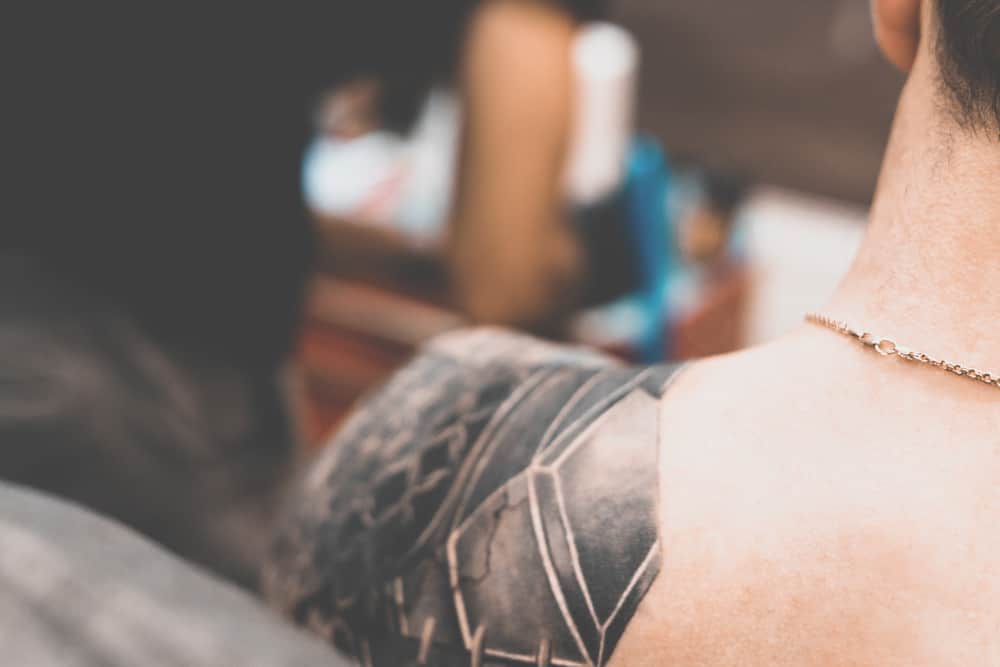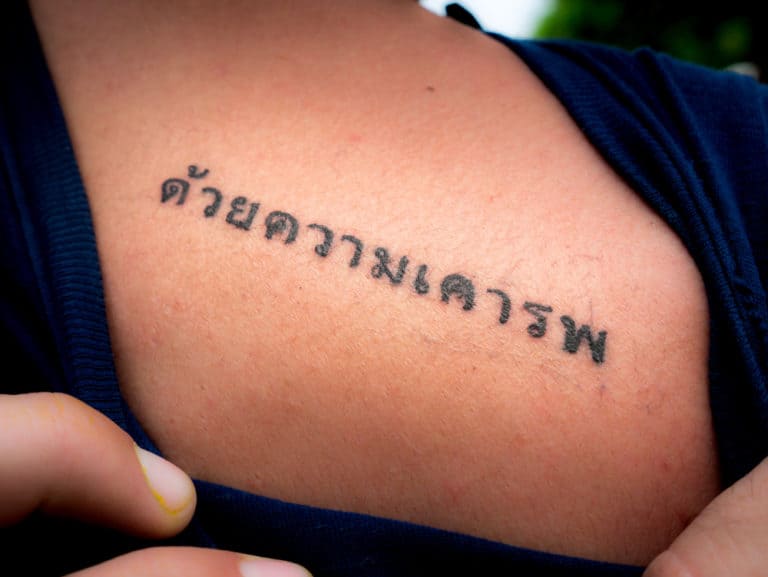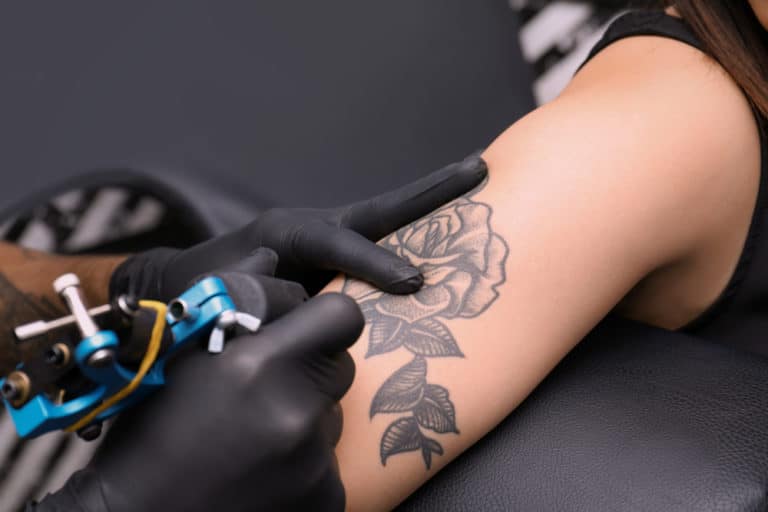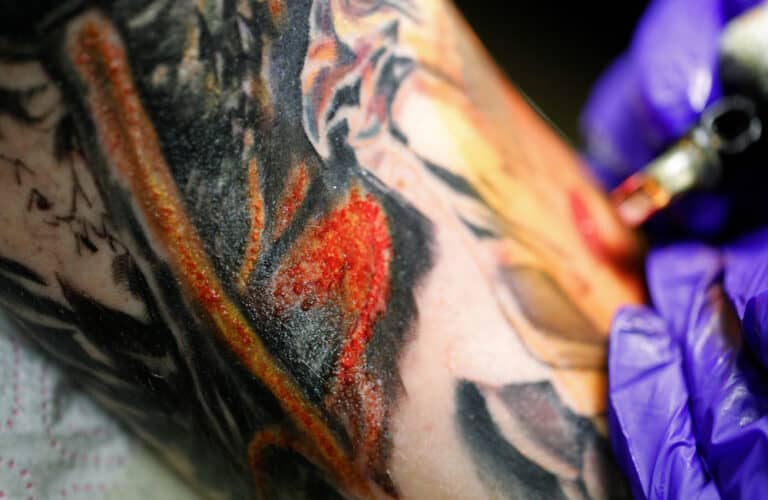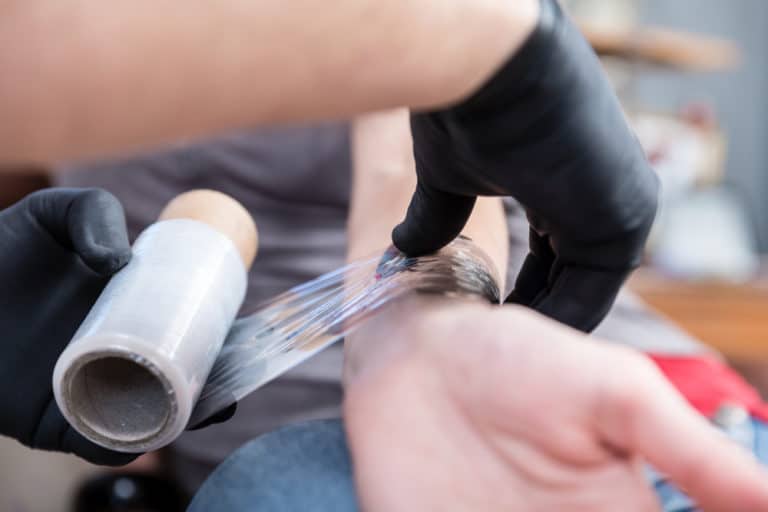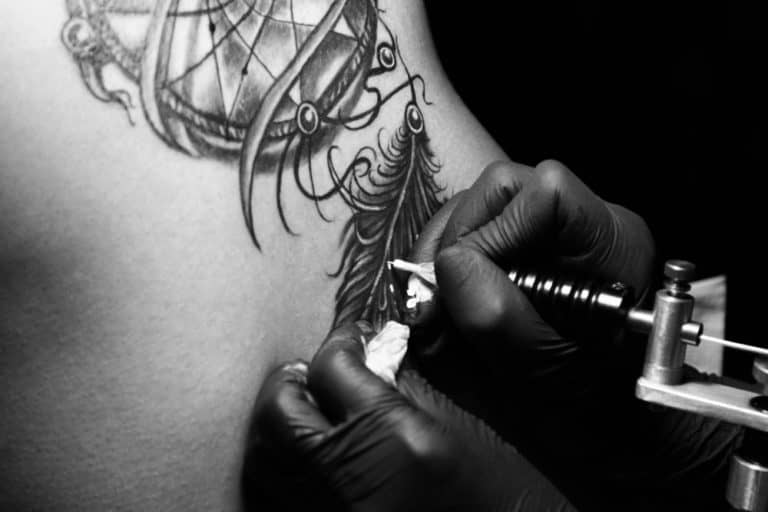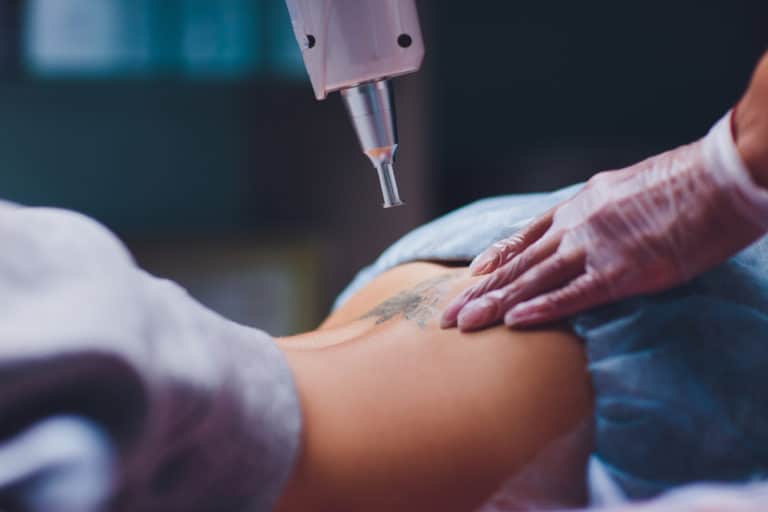Why Do Old Tattoos Raise Up?
Anybody who’s gotten a tattoo is advised that your new tattoo will experience tenderness, itchiness, and swelling as your body recovers from the scarification. However, is there a cause for concern if you have an old tattoo that is raised?
There are a few reasons why old tattoos may become raised:
- Normal bodily reaction
- Weather conditions
- Infection
- Allergic reactions
- Ink contamination
- Tattoo blowout
- Keloid scarring
- MRI complications
- Concealed skin condition
- Swollen lymph nodes
Because the reasons for old tattoos become raised can be harmless to very serious, each of the above reasons will be discussed in greater detail to help you prevent raising and what to do in each scenario should raising occur:
1. Normal Bodily Reaction
Everyone’s body reacts differently to the inclusion of a foreign body, such as tattoo ink, entering their system. Therefore, even old tattoos may become raised from time to time due to your body’s natural reaction to detecting a foreign entity.
Furthermore, other tattoo reactions can be attributed to normal bodily functions, such as hormones’ natural ebb and flow over time.
However, raised tattoos should be monitored closely once detected, as symptoms that do not subside or get worse over time may signify a more serious reason for the raising than simply your body’s normal reactions.
2. Weather Conditions
If you have a tattoo on an area of your skin that is exposed to the elements, such as tattoos below your sleeve line or around your neck and face, it is possible that they can become raised depending on the weather conditions.
During the hot summer months, tattoos can become raised and irritated due to excessive sweat, humidity, and UV radiation from the sun. Consequently, this can cause tattoos to stretch and swell. To prevent swelling during the summer months, you should apply a layer of high-SPF sunscreen on and around the tattoo.
During the cold winter months, tattoos can become raised and irritated due to skin drying out due to cold air and dry artificial heating. To prevent swelling during the cold winter months, you should apply a layer of moisturizer on and around the tattoo and make an effort to stay hydrated.
In any event, proper skincare throughout the changing seasons is necessary for long-term tattoo protection and preservation, especially if your tattoo has lighter colors that are prone to fading.
3. Infection
Although infections from tattoos usually manifest within a few days of receiving a tattoo, it is possible that infections can manifest themselves through itching, oozing, and raising months after receiving a tattoo.
The two most common causes of tattoos infections are poor personal care after getting a tattoo and/or unhygienic practices during the tattoo process.
When you get a tattoo, you must take the necessary steps to limit the tattoo to exposure to the elements during the healing process. Therefore, if scabs appear on and around the tattoo, you must not touch or peel these scabs, as this is dangerous to your body’s natural healing process.
The reason being is that scabs form a protective layer of hard, crusty skin, reducing the risk of external elements entering your exposed skin.
Another cause of infection may be unhygienic equipment and practices during the tattoo process. Including but not limited to not cleaning the skin beforehand, not wearing clean gloves during the tattoo process, using dirty needles, and/or using contaminated ink (see below for more details.)
To reduce the risk of infection happening during the tattoo process, make sure to go to a professional and reputable tattoo parlor that has been recognized for its professionalism and hygiene practices.
If you think your tattoo is infected, make sure to receive immediate medical attention, as the failure to take antibiotics timeously and effectively can lead to serious health complications!
4. Allergic Reactions
While allergic reactions to tattoos usually manifest within a short period once receiving a tattoo, it is possible that your body can experience allergic reactions to the contents of tattoo ink after a few months.
Tattoo ink contains various ingredients, making it difficult to determine whether your body will have a delayed allergic reaction to its contents (note: some people opt to pay extra for “vegan” ink.)
Alternatively, you may be allergic to the latex used in the gloves of tattoo artists, although this typically manifests within a few days of receiving tattoos and not months.
Consequently, you should go to a medical practitioner to test for allergies before getting a tattoo.
Suppose you experience an allergic reaction to your tattoo, such as swelling and itching for long periods. In that case, you should apply a topical steroid ointment to the tattoo and surrounding areas and take antihistamines to ease these symptoms.
Once you have taken steps to reduce your symptoms, you should seek medical attention as soon as possible to determine whether the allergic reactions are temporary/manageable or if you should opt for a procedure such as permanent tattoo removal by a dermatologist.
5. Ink Contamination
Whether ink contamination is caused by poor quality products, hazardous shipping, and/or storage, dirty ink during the tattoo process can lead to a host of complications that can cause swelling, itching, and infections.
Unlike poor hygiene practices, which are observable in a tattoo shop (i.e., the lack of gloves or the use of old, dirty needles), it can be tough to tell at face value whether the ink being used by a tattoo artist has been contaminated or not.
Therefore, the only thing you can do to try and prevent the use of contaminated ink during the tattooing process is to go to a reputable tattoo parlor that meets the standards of health and safety as sanctioned by the FDA.
If you receive a tattoo with contaminated or dirty ink, seek medical attention immediately and report the incident to a legal practitioner, the FDA, and/or the tattoo parlor to ensure the contaminated ink is safely disposed of.
6. Tattoo Blowout
During the tattoo process, a tattoo artist needs to carefully guide the needle and ink injection into the outer layer of the skin known as the dermis; this creates a vacuum in the skin where the ink lies and remains externally visible.
However, inexperienced/poorly trained tattoo artists have been known to be too heavy-handed with their application of ink, whereby the needle passes through the dermis and into deeper layers of the skin where the ink should not be deposited.
If the ink is injected beyond the dermis, the ink can spread beyond the tattoo’s initial surface area, resulting in ink bleeding, healing complications, and swelling/raising.
Other causes of tattoo blowout include tattooing an area of the body with thin skin, the skin is stretched during the tattooing process, or excessive moving by the artist/client during the tattooing process.
To prevent the risk of tattoo blowout, you should choose an experienced tattoo artist, a placement on the body that doesn’t have thin skin, and remain as still as possible during the tattooing process (which may include scheduled breaks for larger/more complex pieces.)
If you experience a tattoo blowout, you can opt for tattoo repair/concealment with another tattoo over the affected area, laser correction, or surgical tattoo removal in the event of a severe tattoo blowout.
7. Keloid Scarring
Although we may not think of tattooing as a form of harm or infliction of wounds, the tattooing process is technically a combination of ink injection into the skin and scarification to create a permanent piece of artwork.
Consequently, this infliction of a wound and subsequent scarification means that the body needs to heal after receiving a tattoo, resulting in some people developing keloid scarring months after receiving a tattoo.
Keloid scars are raised and can result after trauma healing, be it severe accidental trauma or minor controlled trauma like getting a tattoo.
To mitigate the risk of keloid scarring, you should determine how your body reacts to the trauma inflicted by tattoos by asking the tattoo artist to tattoo a small test spot on your body to monitor your body’s natural healing process.
Although it usually takes months for a keloid scar to form, this is a reasonable method of testing your body’s natural healing process without exposing it to a dedicated tattoo which may heal poorly and result in raising.
Regardless of whether you get a test spot tattooed or not, the risk of keloid scarring may occur. If you notice your skin starting to thicken once you get a tattoo, you should consult a dermatologist about using a pressure garment to reduce the risk of a keloid scar forming.
If these preventive methods are unsuccessful, keloid scars can be managed and the swelling reduced via regular visits to a dermatologist that may opt to inject anti-inflammatories in the affected area to reduce swelling.
8. MRI Complications
Because of trace metals in tattoo ink, there have been reports of tattoos receiving burns, swelling, itchiness, and other complications resulting from MRI scans (the same has been reported concerning permanent makeup.)
Although MRI complications are relatively rare and unlikely to result in lasting damage, people with tattoos that are due to receive an MRI scan should tell their medical practitioner in advance so that they can take any precautionary steps to reduce the risk of MRI complications.
The importance of telling a medical practitioner about a tattoo before an MRI scan is to reduce the risk of MRI complications through reduced/periodical MRI scans if burning occurs and inform them of a tattoo since they have been known to affect MRI images.
If MRI tattoo complications persist for lengthy periods after the scan, make sure to go for a checkup with a dermatologist or medical practitioner so they can treat any lasting effects.
9. Concealed Skin Condition
Whether as a result of receiving a tattoo or simply as a result of external factors, raising, itchiness, and tenderness on or around a tattoo may be a sign of a concealed/underlying skin condition, including but not limited to:
- Psoriasis,
- Eczema,
- Vitiligo,
- Lichen planus,
- Sarcoidosis,
- Scars,
- Skin cancer.
Although the above skin conditions can vary from minor annoyances to severe conditions, it is tough to tell at face value whether mild swelling and itchiness may be a sign of a condition that requires medical treatment or not.
Consequently, if you suspect that you have persistent signs/symptoms of a skin condition such as pain, swelling, tenderness, itchiness, peeling, scabbing, or discoloration, you should seek the immediate assistance of a dermatologist to diagnose, prevent, manage, and treat these symptoms.
10. Swollen Lymph Nodes
The largest concentration of lymph nodes on the human body or in and around the neck, groin, and armpits; lymph nodes are round clusters of cells that form an integral part of your body’s immune system and are prone to swelling/infection as a result of disease, bacteria, or viruses.
While uncommon, the inclusion of tattoos in areas with a large concentration of lymph nodes may result in tattoo ink spreading to lymph nodes during the healing process. Consequently, this can result in swollen, tender lymph nodes on and around the tattoo.
Because the swelling of the lymph nodes is typically a sign of infection, bacteria, or viruses, you must seek medical assistance regardless of the reason, as damage to the lymph nodes can have long-lasting effects on your body’s immune system.
Some of my favorite designs, tattoo books, and aftercare products, selected for you
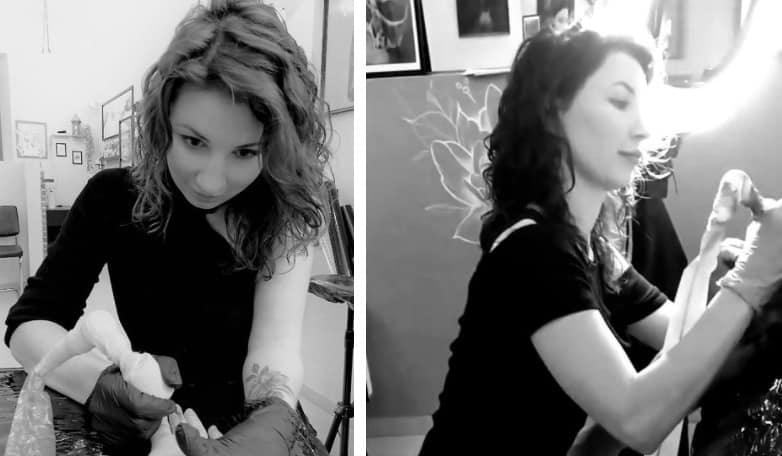
Thank you for reading my article, I hope that you have found it helpful. If you would have trouble finding ideas for your tattoo, wonder what is meaning of design that you have found or what to buy for aftercare, to make sure that your tattoo will be healing quickly and easily, here are some of my favorite products in one place, hope that this will also help.
Design and tattoo ideas
For some ideas you can have a look at those 3 books with hundreds of designs that I use with my clients, they are available on Amazon for Kindle or in classic, paper version (links below):
- Great Book of Tattoo Designs, Revised Edition: More than 500 Body Art Designs (Fox Chapel Publishing) Fantasy, Celtic, Floral, Wildlife, and Symbol Designs for the Skin by Lora Irish
- The Big Book of Small Tattoos – Vol.1: 400 small original tattoos for women and men by Roberto Gemori
- Tiny Tattoos: Over 1,000 Small Inspirational Artworks by Rebecca Vincent.
Tattoo meaning
If you would like to read more about the meaning of different tattoo styles and designs before you will decide what you would like to have, I can recommend a book that was really useful for me when I was starting my tattoo adventure – it’s “Conscious Ink: The Hidden Meaning of Tattoos” by Lisa Barretta (through the link you can find it on Amazon for around $10).
Tattoo aftercare
The skin at the tattoo site often dries out. To prevent it and speed up healing for my clients, I usually recommend one of those tattoo aftercare balms (you can find them on Amazon):
Conclusion
In conclusion, if an old tattoo becomes raised, painful, and/or itchy for an extended period, you must take precautionary steps to ease your symptoms while seeking professional advice from a general practitioner or a dermatologist.
References
- https://manifeststudio.com/blogs/news/itchy-tattoo
- https://www.webmd.com/skin-problems-and-treatments/tattoos-what-you-need-know
- https://www.savedtattoo.com/how-to-fix-a-raised-tattoo/
- https://www.aad.org/public/everyday-care/skin-care-basics/tattoos/tattoo-skin-reactions
- https://www.allure.com/story/itchy-raised-tattoos-causes
- https://www.savedtattoo.com/tattoo-blowout-or-still-healing/

